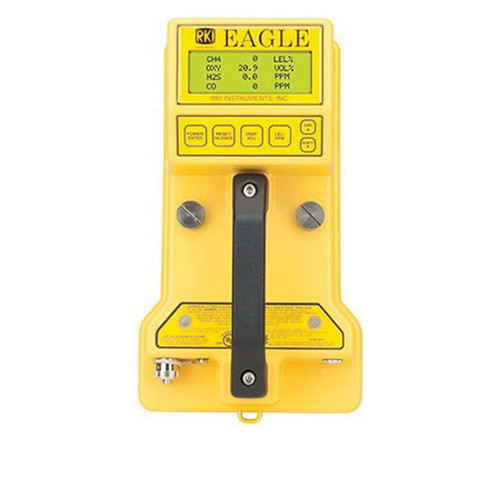RKI Formaldehyde Gas Detector, Series: FP-31, CH2O, Detection Range: 0 to 0.4 ppm or 0 to 1.0 ppm, LCD, -10 to 40 deg C, Alkaline Battery, 7.48 in H X 3.35 in W X 1.57 in D, Includes: Detection TAB (20/Pack), AA Size Alkaline Batteries, Operating Manual
- Built-in sample draw pump
- Photoelectric photometry technology
- Direct digital readout
- Colorimetric detection tablet method
- No false readings from interfering gases
- Operates on 4 AA
- Stores 99 readings
- No warm up time
- Short Description - FP-31 portable formaldehyde monitor
- Warranty - 1 Year
- Item Name - Formaldehyde Gas Detector
- Series - FP-31
- Includes - Detection TAB (20/Pack), AA Size Alkaline Batteries, Operating Manual
- Gas Type - CH2O
- Detection Range - 0 to 0.4 ppm or 0 to 1.0 ppm
- Display Type - LCD
- Temperature Rating - -10 to 40
- Dimensions - 7.48 in H X 3.35 in W X 1.57 in D
- Marketing Description - The FP-31 is a highly sensitive portable gas detector specific for formaldehyde detection. It uses a photoelectric photometry method which utilizes colorimetric tablets for detection. A tablet in placed into the instrument, and then a room air sample is pumped onto the tablet for either a 15 min or a 30 min period. If formaldehyde is present, it will cause the chemically impregnated tablet surface to darken or stain. The magnitude of the stain directly correlates to the level of formaldehyde in the air. The stain darkness is read by an optical sensor in the FP-31, and then the instrument calculates the formaldehyde concentration. The FP-31 then has a direct readout of the formaldehyde measurement on an easy to read LCD display. The unit is capable of detecting very low levels of formaldehyde, in order to confirm if an area contains safe breathing levels. There are no known interfering gases, as shown on the chart on the reverse side of this sheet.
RKI_731063_Specification_Sheet.pdf
RKI_731063_Manual.pdf











